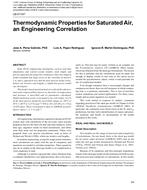Solar radiation control is an effective means to decrease energy needs for cooling. Cool colors, with the same appearance as standard colors but higher solar reflectance in the infrared, are of interest for walls. Walls can be coated for possible energy savings without disturbing the existing structure. However, solar radiation control cannot be as effective on walls as it is on roofs because walls do not receive maximum solar load during the peak cooling season. In order to quantify potential energy savings, field tests were done on adjacent walls coated with and without cool colors. Data from a year of tests in Oak Ridge, TN were used to validate a DOE 2.2 model of a south-facing wall. A model for a single-story residence was configured with stucco-coated wood-framed and concrete masonry unit (CMU) exterior walls. It was exercised in cooling and mixed climates. Annual cooling energy savings for use of a cool color (solar reflectance of 0.495) instead of a standard coating with the same color (solar reflectance of 0.238) were 4% to 13% (4% to 9% in the cooling climates). Whole house peak cooling load savings due to the cool walls averaged 3% to 4%. The annual heating energy penalties for cool walls compared to conventional walls were 4% to 24% (4% to 10% in the mixed climates). They exceeded cooling energy savings for moderate heating needs. If annual energy savings are the sole criterion for application of cool colors on the walls of the modeled residence, 65°F heating degree-days (18°C heating degree-days) should be less than about 2800 (1560) for CMU walls or about 3300 (1830) for wood-framed walls. Atlanta has 3090 (1720) heating degree-days.
Presented at Thermal Performance of Exterior Envelopes of Whole Buildings X – December 2007
Units: Dual
Citation: Thermal Performance of Exterior Envelopes of Whole Buildings X
Product Details
- Published:
- 2008
- Number of Pages:
- 12
- File Size:
- 1 file , 1.7 MB
- Product Code(s):
- D-BldgsX20


